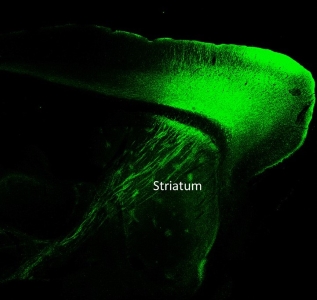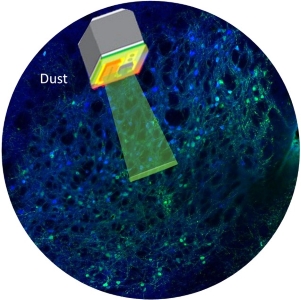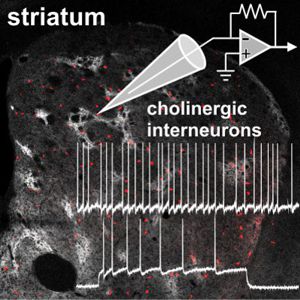BasalGang - Cognition et pathophysiologie des ganglions de la base
The team's research activity focuses on the characterization of basal ganglia functioning in physiological and pathological conditions. These integrative subcortical structures form several parallel and interconnected loops together with the cerebral cortex and the thalamus, which control various motor, emotional, motivational and cognitive functions underlying voluntary motor activity. We aim at clarifying how dysfunction of these structures and their communication with cortical areas contributes to the genesis of neurodegenerative (Parkinson's disease) and psychiatric (schizophrenia and autism spectrum disorders) pathologies. We are particularly interested in the interactions between excitatory corticofugal circuits (glutamate) and dopaminergic, GABAergic and cholinergic neuromodulatory systems within the basal ganglia. This research activity is carried out in normal animals and in rodent models of these pathologies. It is based on a multidisciplinary approach combining electrophysiological, cellular and behavioral analyses, as well as genetic, optogenetic/chemogenetic and pharmacological manipulations.
Ongoing research activity

One of the team's main research topics aims at understanding how cortico-subcortical communication operates at different levels of the basal ganglia network to support implementation of a coherent and appropriate behavioral response adapted to changing environments. In this context, a major consideration is given to the involvement of corticofugal pathways in the development of cognitive and motor deficits associated with early and advanced stages of Parkinson's disease (PD). Combining mouse lesion models of this pathology, as well as several original genetic tools, we seek to understand how synaptically released zinc from cortico-striatal pathways contribute to motor and non-motor deficits.

The second research topic involves optogenetic approach in behaving animals to understand the function of the various GABAergic neuronal subpopulations of the external globus pallidus and the cortico-pallidal circuit in normal PD states conditions This structure, whose function within the basal ganglia circuits has a long been undermined, is currently attracting increased attention. In recent years, a diversity of GABAergic cell type and anatomical connectivity of GPe have been uncovered opening whole new lines of inquiry into the functional role of this nucleus in behavior and disease. Another aspect of this research activity involves development of novel neuromodulation optogenetic tools in the framework of the StarDust European project. Theaim is to develop a fully wireless and battery-less miniaturized implantable device (called Dust) for deep brain optogenetic neuromodulation and electrophysiological recoding.

The third research topic, in collaboration with Laurent Fasano's team (IBDM, Marseille), focuses on autism spectrum disorders (ASD) linked to the TSHZ3 gene (https://gene.sfari.org/database/human-gene/TSHZ3). We have shown that THSZ3 haploinsufficiency is at the origin of a syndrome including ASD and defects in neuronal and renal development. Using transgenic mouse models, we studied the consequences of conditional deletion of the Tshz3 gene in cortical projection neurons and cholinergic interneurons of the striatum, allowing us to pinpoint some of the molecular and cellular mechanisms underlying ASD. Our current preclinical research aims at identifying potential targets for chemogenetic and pharmacological treatments to ameliorate Tshz3-related ASD symptoms. This line of research benefits from a multidisciplinary approach at molecular (RT-qPCR analyses, RNA-seq, transcriptomic studies), cellular (immunohistochemistry, patch-clamp electrophysiology on classic slice coupled with optogenetics) and behavioral level (social interactions, stereotypies, etc.).
